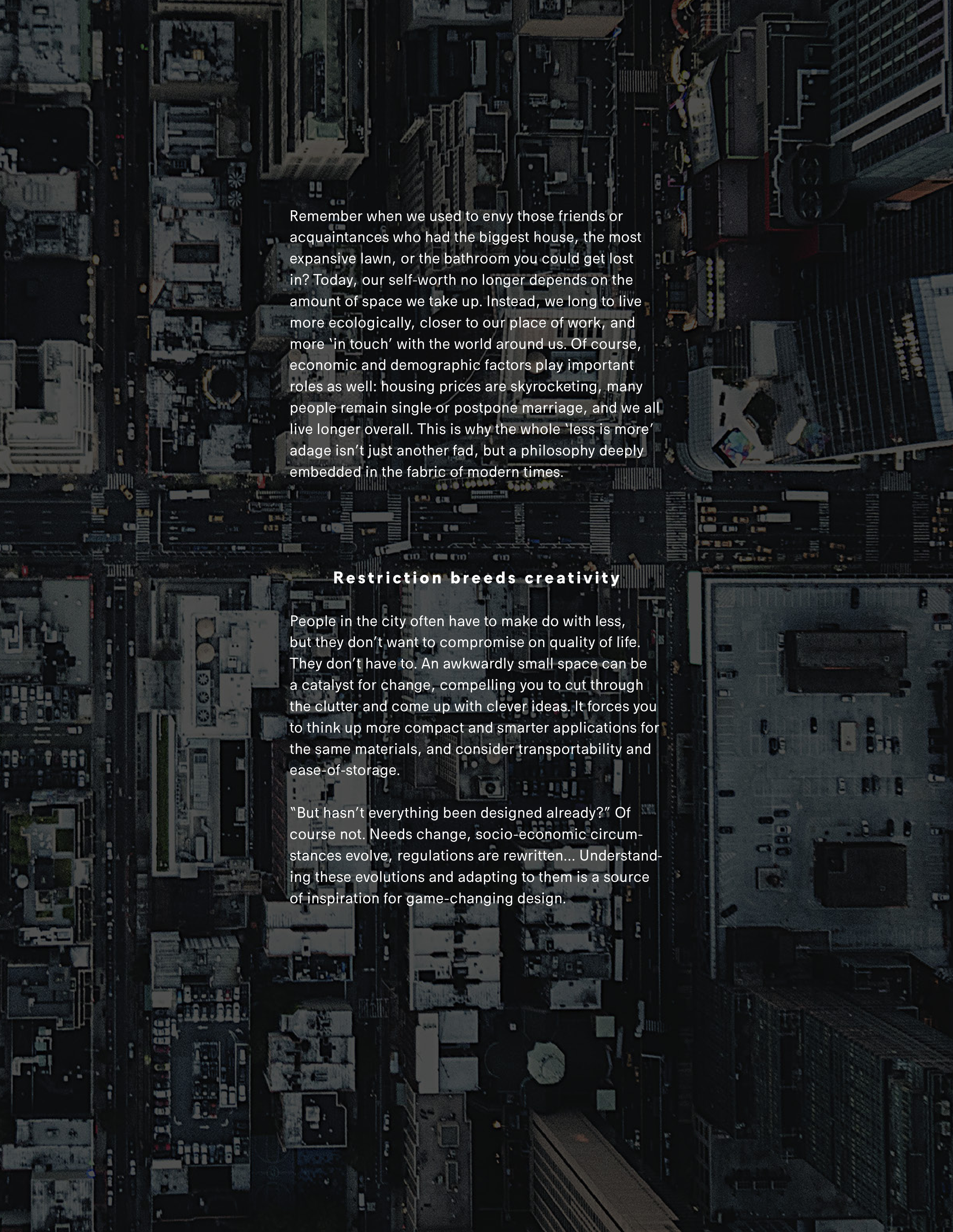Remember when we used to envy those friends or
acquaintances who had the biggest house, the most
expansive lawn, or the bathroom you could get lost
in? Today, our self-worth no longer depends on the
amount of space we take up. Instead, we long to live
more ecologically, closer to our place of work, and
more ‘in touch’ with the world around us. Of course,
economic and demographic factors play important
roles as well: housing prices are skyrocketing, many
people remain single or postpone marriage, and we all
live longer overall. This is why the whole ‘less is more’
adage isn’t just another fad, but a philosophy deeply
embedded in the fabric of modern times.
R e s t r i c t i o n b re e d s c re a t i v i t y
People in the city often have to make do with less,
but they don’t want to compromise on quality of life.
They don’t have to. An awkwardly small space can be
a catalyst for change, compelling you to cut through
the clutter and come up with clever ideas. It forces you
to think up more compact and smarter applications for
the same materials, and consider transportability and
ease-of-storage.
“But hasn’t everything been designed already?” Of
course not. Needs change, socio-economic circum-
stances evolve, regulations are rewritten… Understand-
ing these evolutions and adapting to them is a source
of inspiration for game-changing design.


